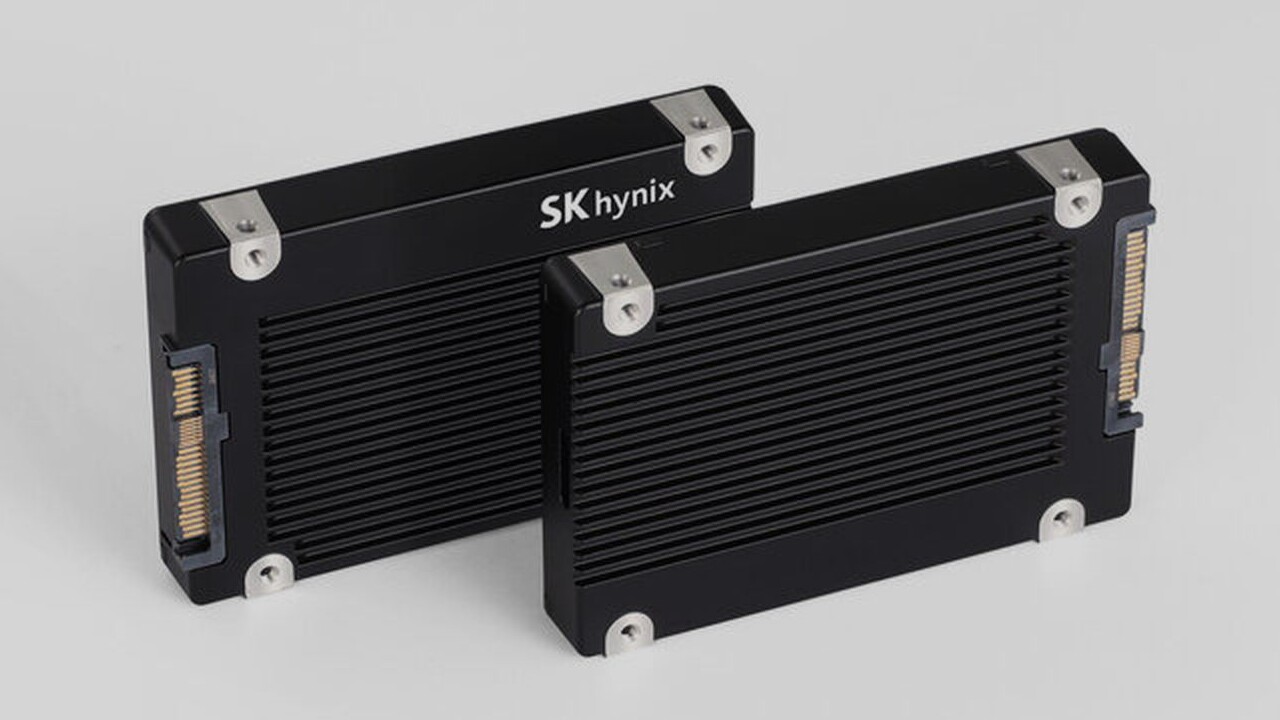Separation complete: Sanksisk and Western Digital are independent again 36 comments
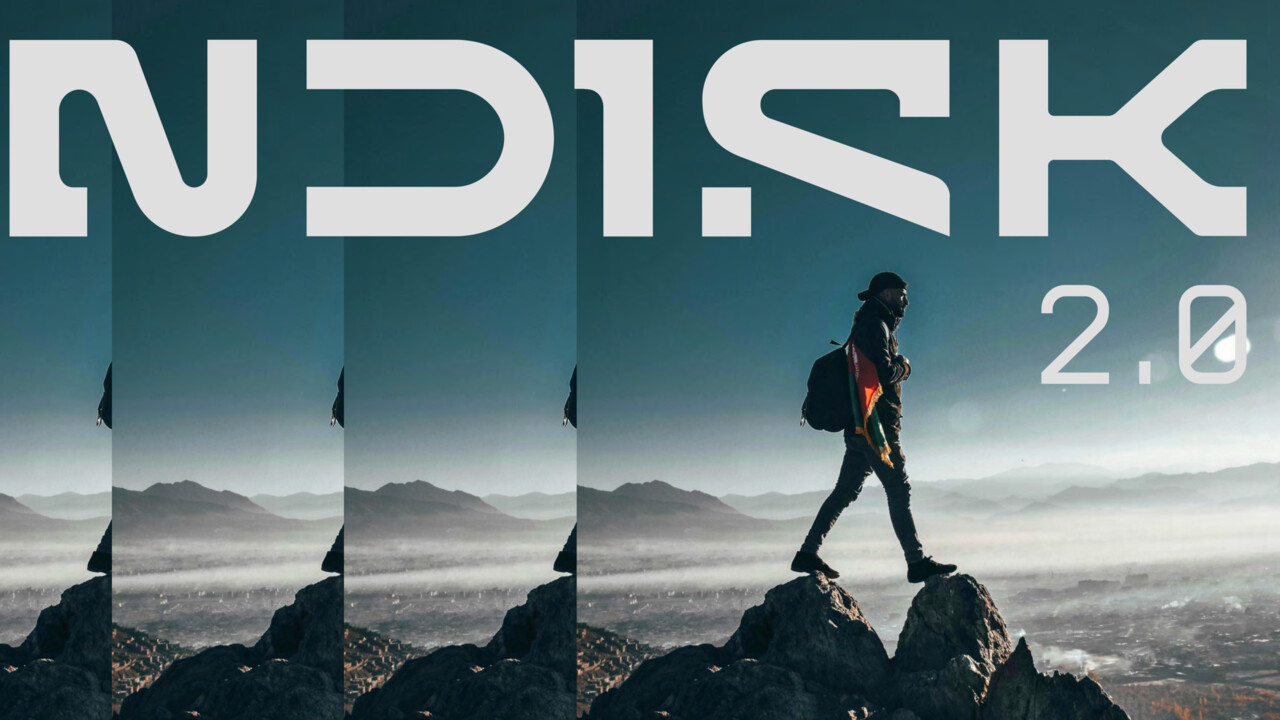
Image: Sanisk
The time has come. Western Digital broke up the Sandisk-branded Flash business, which was taken over in 2016. From that point on, Western Digital was once again focused on magnetic storage, primarily with hard drives for data centers. Sandisk operates independently with the ex-CEO on top with flash memory products such as SSDs.
Without a big fan and a little later than expected, Western Digital announced the completion of the separation. The two had held their investor day a few days earlier and there was basically everything there and the direction for the future had been told.
Western Digital focuses on “Boomend” hard drive
In the company blog, the new CEO of Western Digital, Irving Tan, once again explained the arguments for this step. The company is now entirely focused on the hard drive. In times of increasing need for large amounts of storage for cloud and AI, traditional mechanical hard drives are seeing a resumption of growing sales figures. The long-term expertise of the hard drive pioneer and large customer base will help you swim on this wave.
Technically, the first HAMR hard drives at Western will soon be digital standby, with which the storage volume is to be further increased per drive. Western Digital still wants to follow its EPMR technology up to 36 TB. The big competitor Seagate already serves this brand with HAMR.
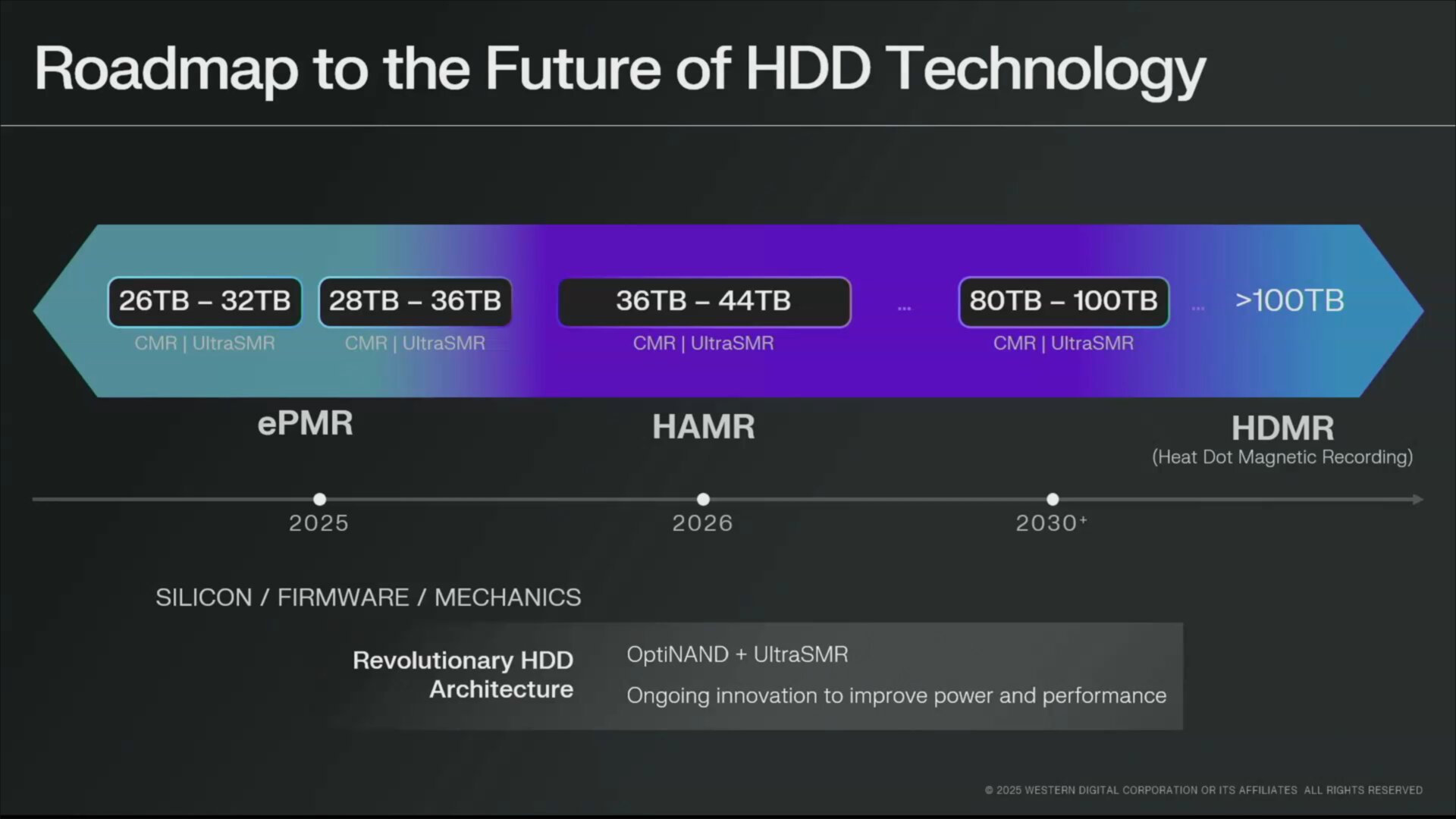 Western Digital HDD Roadmap (February 2025) (Image: Western Digital)
Western Digital HDD Roadmap (February 2025) (Image: Western Digital)
HAMR wants to use Western Digital if it’s also worth it. By the end of 2026, Western Digital’s first HAMR hard drives are expected to be completed. Larger quantities are only expected for 2027
Searches also beyond the hard drive
At the same time, research continues and according to HAMR, heat point magnetic recording (HDMR) for HDDs with more than 100 TB is on the plan. But as Irving Tan suggests, the search is additionally studied from the hard drive.
In addition to HDD, our teams are exploring new growth opportunities that utilize our core competencies in magnetics and materials science, and with their commitment, the possibilities for future applications of our technologies are truly endless.
Irving Tan, the new CEO of Western Digital
Among other things, the mysterious archive storage, which was already on a presentation film with 50 TB +, could be meant. In patents, the idea of a tape magazine was formulated in hard disk format.
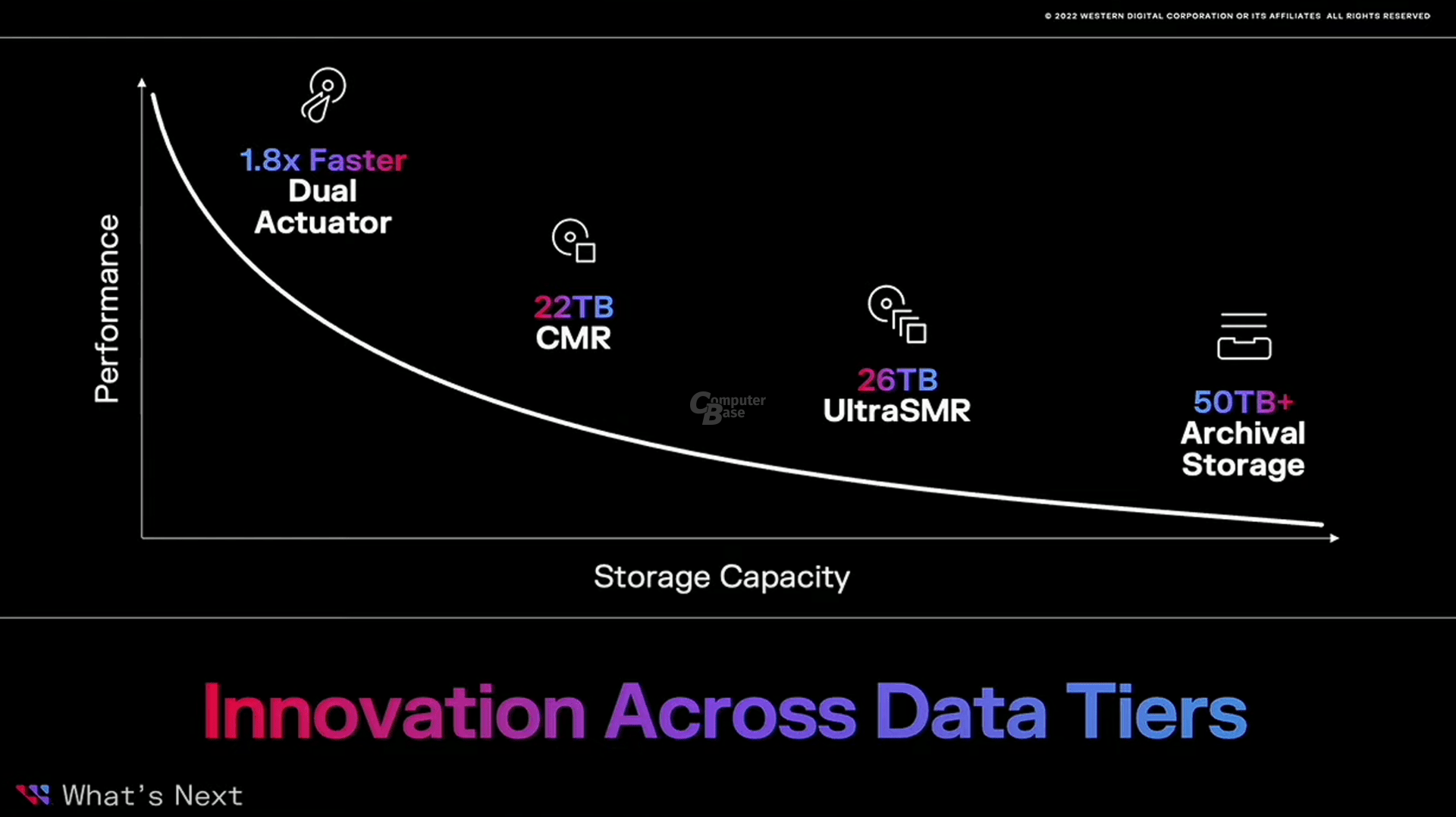 Four segments for hard drives
Four segments for hard drives
Sandisk makes flash memory independently again
The Sandisk brand has been around since 1988, not as old as Western Digital, which dates back to 1970. Sandkisk made a name for itself with flash memory products such as memory cards, USB sticks and SSDs and was now the market leader in this field. But in the fall of 2015, Sandisk looked around relatively surprisingly for a buyer and finally found one in Western Digital, which took $19 billion in hand for the Sandisk takeover.
In May 2016, the time was right and the merger of the two memory giants received the green light. From that point on, Sandisk had gone digital for the Western Product brand. Over the years, new SSDs with the WD logo have appeared.
After a large investor suggested splitting the Western SSD division digitally in order to increase stock value with another distinct focus on HDD and SSD, the split was announced in October 2023.
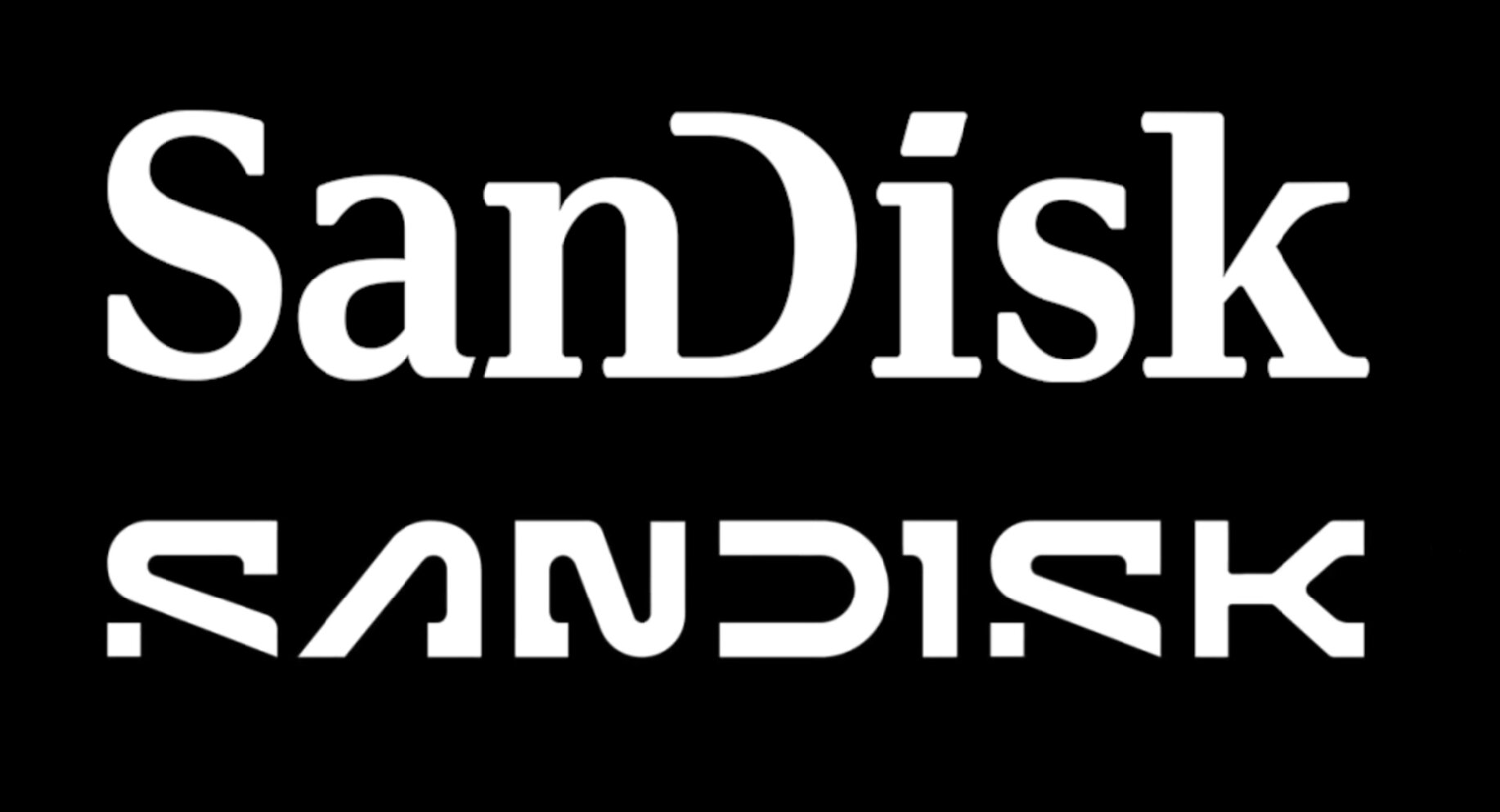 Sandisk logo from December 2024 (below) and before (photo: Sandisk)
Sandisk logo from December 2024 (below) and before (photo: Sandisk)
After the Sandisk brand was completely transferred to the Sandisk brand about a year later, a clearly redesigned Sandisk logo was presented in December 2024.
And this marks the new beginning of the veteran memory brand as “Sander 2.0”, as he recently said at Investor Day.
Sandisk 2.0 accelerates with search
Under the leadership of Davi Goeckeler, who has now relinquished the post of head of Western Digital, Sandisk will mainly focus on the previous business with Nand Flash Products. The partnership in the development and manufacturing of NAND-Flash with Koxia (formerly Toshiba) remains until 2034.
Both companies recently gave a vision of their 10 generation aliases of NAND nands, with which market leader Samsung could be snatched from the crown in bit density.
Storage cards and SSDs for customers and consumers remain a firm pillar of Sandisk, but as AI evolves, the cloud enterprise must be served with enterprise SSDs. Sandisk competes indirectly with Western Digital and will soon want to offer data carriers with 128 TB and SSDS soon with 256 TB to 512 TB.
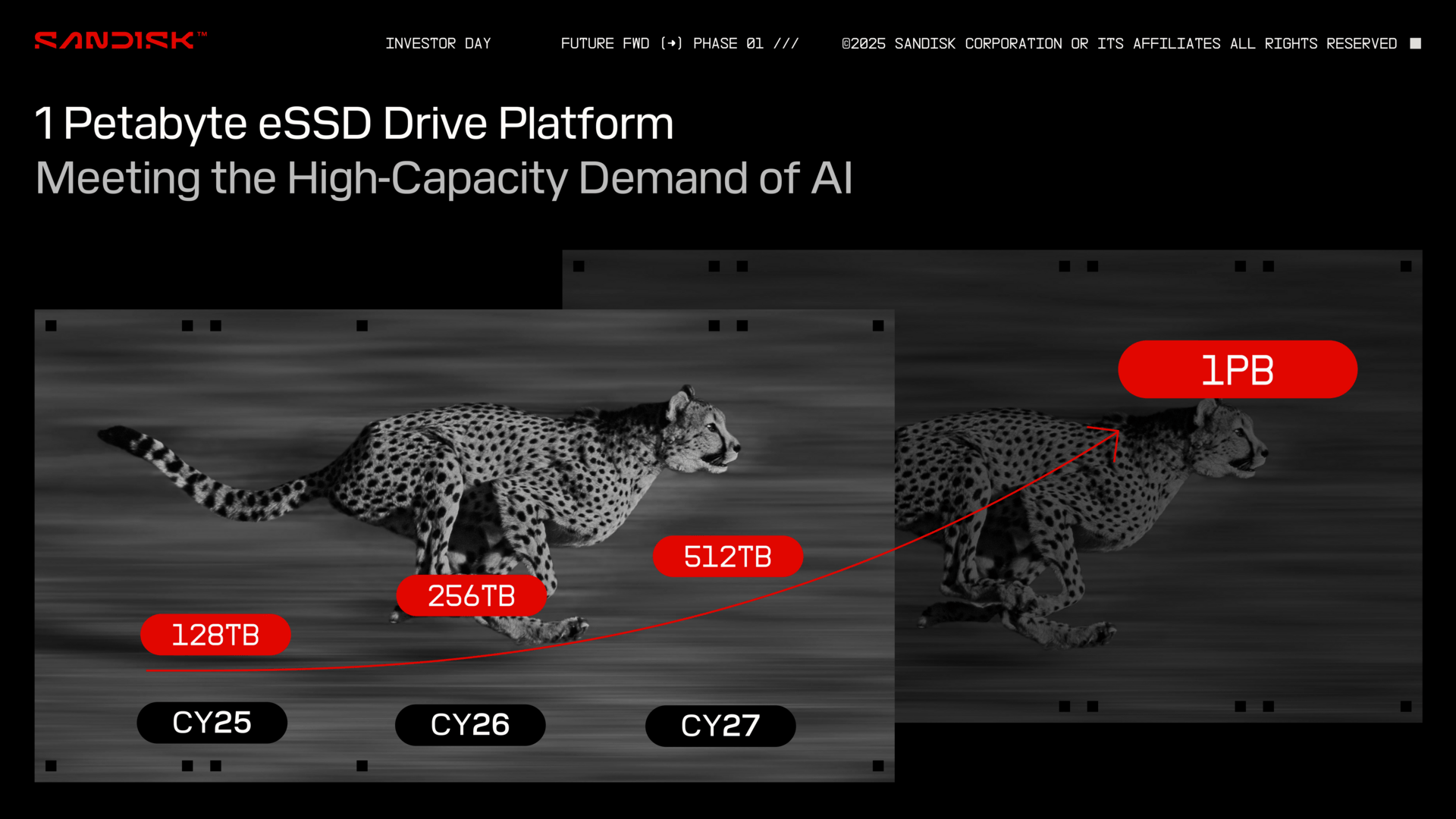 Ambitious roadmap: Sandisk wants to double SSD capacity to 256 TB and 512 TB for the next few years, Petabyte SSD is getting closer (photo: Sandisk)
Ambitious roadmap: Sandisk wants to double SSD capacity to 256 TB and 512 TB for the next few years, Petabyte SSD is getting closer (photo: Sandisk)
In the AI direction in particular, the recently formulated idea of high bandwidth flash (HBF), which at least complements high bandwidth memory (HBM) on AI accelerator boards, if not replaced.
But Sandisk is also pursuing the paths taken with NAND products and has a cheaper alternative to DRAM with 3D matrix memory.
Topics: Flash Memory Sandisk SSD Storage Western Digital Business

Alice guides you through the best storage solutions, from ultra-fast SSDs to secure cloud options.
